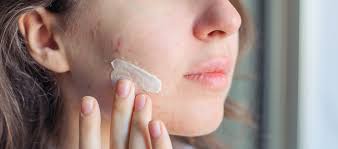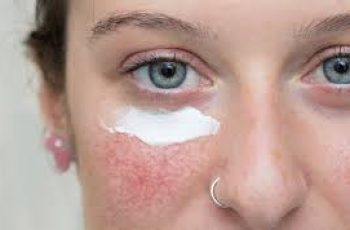
Can Salicylic Acid Cure Acne? Here’s the Real Truth
If you have oily or acne-prone skin, chances are you’ve heard of salicylic acid. It’s one of the most talked-about ingredients in skincare—and for good reason.
Salicylic acid is known for its deep-cleaning power. It penetrates into your pores to clear out oil, bacteria, dead skin cells, and other gunk that causes breakouts.
But can it actually cure acne? And why do some people break out more when they start using it? Let’s break it all down.
What Is Salicylic Acid?
Salicylic acid is a type of beta hydroxy acid (BHA). Unlike alpha hydroxy acids (AHAs), which stay on the surface, BHAs go deep into pores.
This means salicylic acid can help remove clogs from within the pore lining—not just clean the surface of your skin.
It also exfoliates the outer layer of your skin. This helps remove dead skin cells, smooth texture, and brighten your overall complexion.
When dead skin cells pile up on the surface, your skin can look dull. You might notice flaky patches, uneven tone, or more breakouts.
Salicylic acid helps break that cycle. It clears away the buildup and keeps your skin looking smoother and more refreshed.
Is Salicylic Acid Good for Acne?
The short answer: yes, it’s one of the best ingredients out there for acne-prone skin.
But it’s not magic—and it’s not right for everyone. Like any skincare ingredient, how well it works depends on your skin type and how you use it.
Let’s go over the most common concerns people have with salicylic acid—and what you should know before using it.
Does Salicylic Acid Make Acne Worse?
Sometimes, yes. But it’s not necessarily a bad thing. It depends on what’s going on underneath your skin.
There are several reasons why you might experience more breakouts when you start using salicylic acid.
1. You’re Using the Wrong Strength
Salicylic acid comes in different concentrations. Over-the-counter products usually range from 0.5% to 2%.
If your product doesn’t list the percentage or it appears far down on the ingredients list, it may not be strong enough.
To be effective, salicylic acid should be among the first five active ingredients listed on the product label.
If it’s not, you might not be getting a high enough dose to treat your acne.
On the flip side, too high of a concentration can dry out or irritate your skin—especially if you’re just starting out.
2. You’re Not Using It Often Enough
Some people try a salicylic acid product once or twice, see no difference, and give up.
But with salicylic acid, consistency is key. You have to build up to regular use for it to work well.
Start by using it 2–3 times a week. As your skin gets used to it, you can increase to daily use if needed.
Be patient. Your skin needs time to adjust. Overdoing it too soon can cause irritation, dryness, or even more breakouts.
3. It Might Not Be the Right Ingredient for You
Even though salicylic acid works for many people, it’s not a one-size-fits-all solution.
If you’ve used it consistently for over four weeks with no improvement, it may not be effective for your skin.
Some people simply don’t respond well to BHAs. Others may have reactions or develop more irritation.
In that case, you should talk to a dermatologist. They can help you find an alternative treatment that suits your skin better.
4. It’s the Purging Phase
Yes, breakouts might get worse before they get better. This is actually common and often called “purging.”
Salicylic acid brings blockages to the surface quickly. That means you may see more pimples before your skin clears.
Purging usually lasts about 2–4 weeks. During this time, your skin is adjusting and clearing out old congestion.
If the breakouts continue beyond that or become painful, it could be irritation—not purging.
How Long Does It Take for Salicylic Acid to Work?
You may start to see some changes within the first week or two. But for full results, give it about four to six weeks.
This is the average time your skin needs to renew itself and respond to treatment.
Some people notice improvements sooner, especially with mild acne. For more severe breakouts, it might take 6–8 weeks or longer.
If you’re not seeing any changes by then, consult a skincare professional or dermatologist.
Also, always do a patch test before starting a new product to avoid allergic reactions or irritation.
Is Salicylic Acid Safe to Use Daily?
Yes—but only once your skin has adjusted.
At first, use salicylic acid just a few times a week. This helps your skin build a tolerance without becoming too dry or sensitive.
It’s best to apply salicylic acid products in the evening. They can make your skin more sensitive to sunlight.
To avoid sun damage, wear SPF 30 or higher every day—especially when using exfoliating acids like salicylic acid.
If your skin responds well after a few weeks, you can increase usage to once daily.
Watch for any signs of irritation. If your skin feels tight, red, or dry, cut back to a few times a week.
What Products Contain Salicylic Acid?
You’ll find salicylic acid in many over-the-counter skincare products.
These include cleansers, toners, serums, spot treatments, face masks, and exfoliating pads.
Some popular choices are:
Gel or foaming cleansers with 2% salicylic acid
Leave-on serums or treatments for acne-prone areas
Clay masks that include BHAs to clear pores
Toners that help exfoliate and reduce oil
If you’re new to salicylic acid, a cleanser is a great place to start. It’s easy to use and rinses off, so it’s less likely to cause irritation.
Can Salicylic Acid Help With Acne Scars?
Yes, it can help fade post-acne marks over time.
Because it exfoliates the skin, salicylic acid helps increase cell turnover. This means dark spots, discoloration, and uneven texture will fade faster.
However, it won’t work overnight—and it’s not strong enough for deep or pitted acne scars.
For those, you may need professional treatments like chemical peels, microneedling, or laser therapy.
Still, regular use of salicylic acid can significantly improve mild acne scarring and keep new breakouts from forming.
How Does It Compare to Other Acne Treatments?
Salicylic acid isn’t the only ingredient used to treat acne, but it is one of the most popular.
Benzoyl peroxide is another powerful acne treatment. It kills acne-causing bacteria, but it can be more drying or irritating.
Azelaic acid is another option. It treats acne and rosacea, reduces redness, and fades dark spots.
Retinoids like adapalene (Differin) are great for preventing clogged pores and smoothing skin texture—but can cause initial dryness or flaking.
Many people use salicylic acid along with other ingredients in a layered routine. Just introduce them slowly to avoid overloading your skin.
Final Thoughts: Should You Use Salicylic Acid for Acne?
Salicylic acid is one of the most trusted, research-backed ingredients for treating acne.
It helps exfoliate the skin, clear clogged pores, reduce oil buildup, and prevent future breakouts.
It can cause some initial purging, but that usually means it’s doing its job deep within the skin.
Stick with it for at least four to six weeks, and you’ll likely start to see clearer, smoother skin.
If you experience irritation, consult a dermatologist. They can guide you toward the right combination of products for your skin type.
Remember to wear sunscreen daily and avoid overusing exfoliating products. Healthy skin needs balance—not just strong ingredients.
TL;DR Summary:
Salicylic acid is a powerful BHA that treats acne by exfoliating and unclogging pores
It may cause initial breakouts during the purging phase
Use 2–3 times a week at first, then increase if your skin tolerates it
Combine with SPF and avoid overuse to prevent irritation
Not everyone will respond the same, so consult a doctor if you see no improvement
Let your skincare routine work with your skin, not against it. Salicylic acid can be your ally—just use it wisely.


